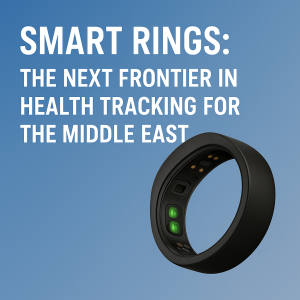Diabetes and Hypertension in the Middle East: A Deep Dive into 2025 Health Challenges
An in-depth analysis of the rising prevalence of diabetes and hypertension in the Middle East, exploring underlying causes, socioeconomic impacts, and public health responses.
 Introduction
Introduction
The Middle East is experiencing a significant surge in non-communicable diseases, notably diabetes and hypertension. These conditions are not only medical concerns but also socioeconomic challenges that threaten the region’s development and stability.
Prevalence and Projections
-
Diabetes: As of 2024, approximately 84.7 million adults aged 20–79 in the Middle East and North Africa (MENA) region live with diabetes. This number is projected to nearly double, reaching 162.6 million by 2050, marking a 92% increase. Diabetes Atlas
-
Hypertension: The prevalence of hypertension in the region varies but is notably high, with estimates suggesting that nearly 30% of adults are affected.
Underlying Risk Factors
1. Urbanization and Lifestyle Changes
Rapid urbanization has led to sedentary lifestyles and increased consumption of processed foods, contributing to obesity—a significant risk factor for both diabetes and hypertension.
2. Environmental Factors
Exposure to air pollution and limited access to green spaces hinder physical activity and increase the risk of developing type 2 diabetes. Verywell Health
3. Genetic Predisposition
Certain populations in the Middle East have a higher genetic susceptibility to insulin resistance and hypertension, exacerbating the prevalence of these conditions.
4. Conflict and Instability
Ongoing conflicts in parts of the region disrupt healthcare services, leading to poor disease management and increased stress levels, which are risk factors for both conditions. Axios
Socioeconomic Impacts
The rise in diabetes and hypertension cases imposes a substantial economic burden due to increased healthcare costs and loss of productivity. In 2024, diabetes-related healthcare expenditure in the MENA region totaled USD 35 billion. Diabetes Atlas
Public Health Responses
1. National Health Initiatives
Countries like Saudi Arabia and the UAE have launched national screening programs and public awareness campaigns to promote early detection and lifestyle modifications.
2. Digital Health Solutions
The adoption of telemedicine and mobile health applications facilitates remote monitoring and management of these chronic conditions, especially in underserved areas.
3. Policy Measures
Implementation of taxes on sugary beverages and regulations on food labeling aim to encourage healthier dietary choices among the population.
Recommendations
-
Integrated Healthcare Approach: Develop comprehensive care models that address multiple chronic conditions simultaneously.
-
Community Engagement: Involve local communities in health promotion activities to ensure cultural relevance and effectiveness.
-
Research and Data Collection: Invest in region-specific research to better understand the unique challenges and develop targeted interventions.
Conclusion
Addressing the escalating prevalence of diabetes and hypertension in the Middle East requires a multifaceted approach involving healthcare system strengthening, policy reforms, and community engagement. Proactive measures taken today will determine the region’s health outcomes in the coming decades.
At XinRui Medical, we are committed to supporting healthcare providers in the Middle East with advanced diagnostic tools and solutions tailored to combat chronic diseases like diabetes and hypertension.
👉 Explore our offerings at www.xinrea.com or contact us to learn how we can assist in enhancing your healthcare services.

 Smart Rings: The Next Frontier in Health Tracking for the Middle East
Smart Rings: The Next Frontier in Health Tracking for the Middle East